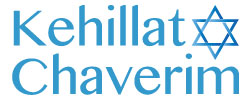Tetzaveh 5779 – STONED ON TETZAVEH
STONED ON TETZAVEHI just get back from Disney World and I find an email from Alan. Will I give a Dvar on February 16th? Sure! Why bother checking what I’m getting myself into. Tetzaveh? Isn’t that the Parsha that describes the priestly garments? How will I ever turn this into a good Dvar? After minutes of intense concentration (maybe I should have given the matter a little more thought), I decide that the best approach is to ask myself some questions about the Parsha and then research to find the answers. Here’s the questions that I developed: (1) What stones are on the priestly breastplate, (2) Why these stones, (3) Why 12 stones? Since all of my questions involve stones, I decided to title my Dvar “Stoned on Tetzaveh”.
The Priests, starting with Aaron and his four sons, were required to wear special garments. These garments are described in detail in this week’s Parsha. The names of Aaron’s four sons, if you’re curious, are Nadav, Avihu, Elazar and Itamar. Rather than describing all the garments of the High Priest and Ordinary Priests, I am going to limit my discussion to those items that pertain to my three questions. The High Priest wore on his shoulders two gold settings. Gold chains extended from the settings to gold hooks in rings that were on a breastplate. This allowed for the breastplate to be affixed to the ephod, an apron which he wore. The breastplate, or Choshen Mishpat (breastplate of judgment), was square and was worn over the heart. It is on this breastplate that the 12 stones were set.
So, what were the 12 stones? Although the stones are named, their true identity remains a mystery. The terms used to name the stones are very difficult to translate. The end result is that over thirty opinions have been rendered by Biblical scholars regarding the identity of the stones. What is known is that the color of each stone corresponded with the color of the banners carried by the tribes during the journey through the wilderness. Based upon this information, a list that often appears for the 12 stones is as follows: Reuven-ruby (red), Shimon-jade (green), Levi-agate (red, white and black striped), Judah-emerald (bluish-green), Issachar-lapis-lazuli (deep blue), Zebulun-quartz (clear), Dan-turquoise (blue), Naftali-amethyst (purple), Gad-agate (grey), Asher-aquamarine (blue-green), Joseph-onyx (black) and Benjamin-opal (a play of all colors). The first two questions have now been addressed. A reasonable list of the 12 stones has been put together based upon the color of the tribes’ banners. Therefore, it is nowappropriate to proceed to the last question.
Why 12 stones? The simple answer is that the 12 stones represent the twelve tribes of Israel. The High Priest wore this reminder of the tribes on his breastplate over his heart so that he could be mindful of them when he came before G-d. The order of the tribes on the breastplate, however, is also a subject of controversy. It is known that the stones were place on the breastplate in four rows of three stones each. The name of a tribe was engraved on its corresponding stone. In which order were the stones/tribes placed on the breastplate? One school of thought is that the tribes were listed in the order of the birth of the sons of Jacob. Thus, the engraved stones of Reuven, Shimon and Levi would appear in the first row in that order concluding with Zebulun, Joseph and Benjamin in the last row. A differing opinion places the stones/tribes according to the Matriarchs who bore them. First came the six sons of Leah followed by the two sons of Bilhah, two sons of Zilpah and two sons of Rachel. Using this approach Reuven, Shimon and Levi would be in row 1 ending with Asher, Joseph and Benjamin in row 4. A third approach places the tribes on the breastplate in the order that they marched in the wilderness. That’s part of the beauty of Judaism. Two people—three opinions.
How can I conclude this talk with only three questions? Don’t we typically ask four questions? So, here is my fourth question. Frankly, I don’t have an answer. If the 12 stones are supposed to remind the High Priest of the 12 tribes, then why were the 12 sons of Jacob engraved on the 12 stones rather than the actual 12 tribes? I’ll leave that question for you to research.

